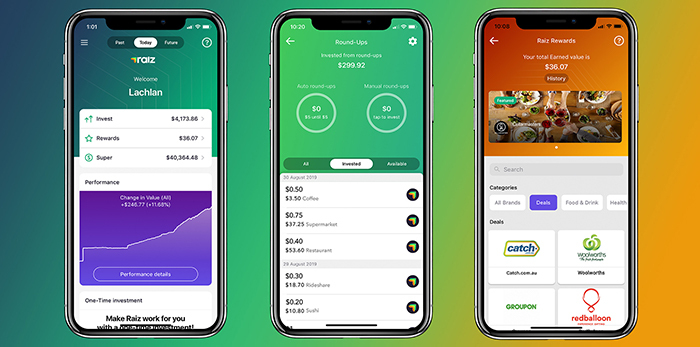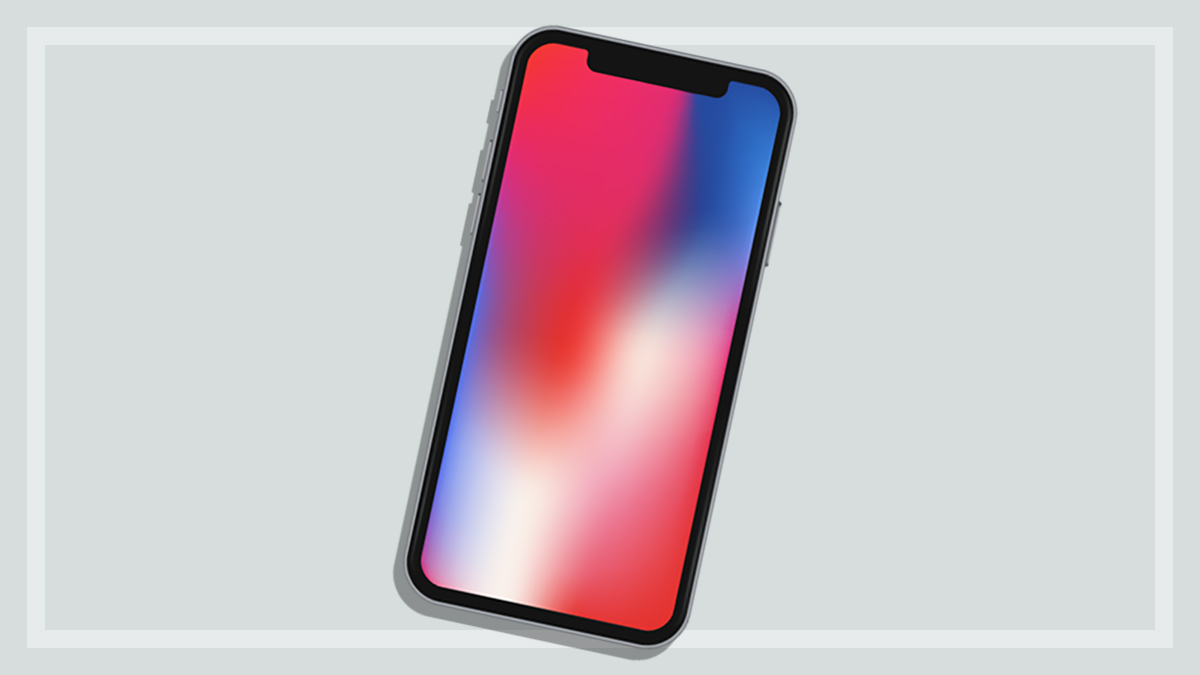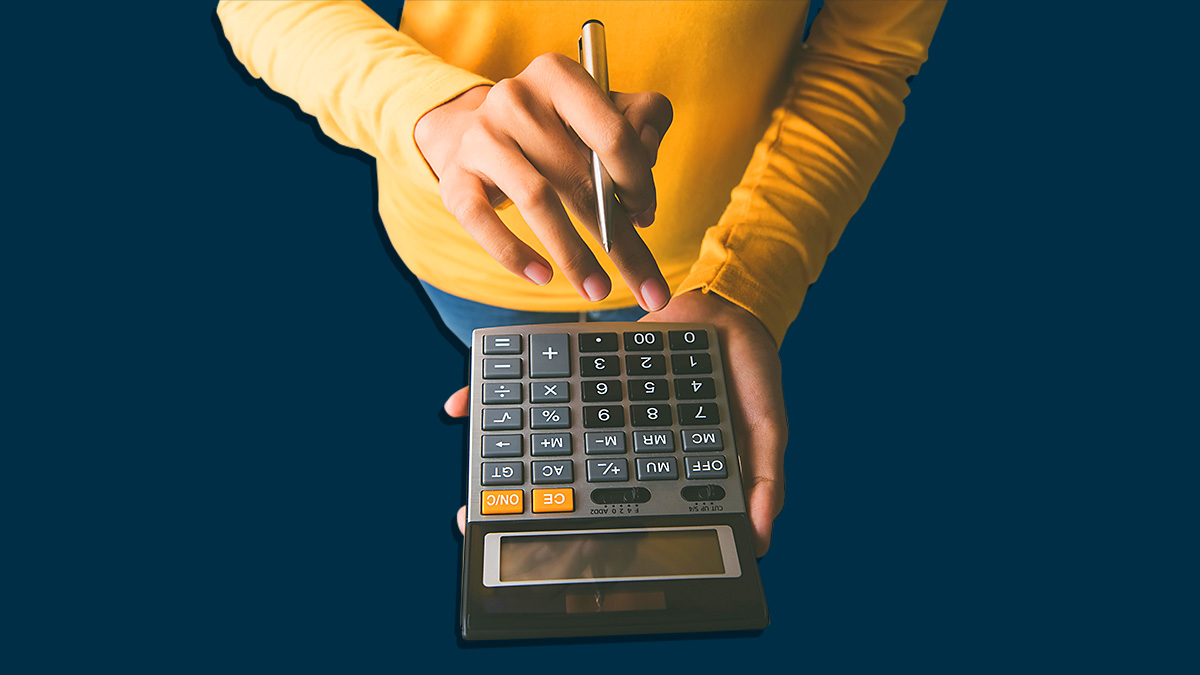Get our independent lab tests, expert reviews and honest advice.
The Raiz micro-investing app explained

Need to know
- 'Micro' options are increasingly popular among young people who want to start investing
- Raiz is one of the most popular micro-investing services and lets you start investing with as little as $5
- Experts say Raiz has many benefits, but urge users to be aware of fees
On this page:
- What is Raiz?
- Depositing money into Raiz
- Choosing a Raiz investment portfolio
- Withdrawing money from Raiz
- How to close a Raiz account
- Raiz fees
- Is Raiz a good investment tool?
- Raiz vs CommSec Pocket
It’s no secret that Australia’s young people are struggling financially.
A 2020 study shows the scale of the problem, finding that in the decade since 2008, incomes of people aged 15–34 declined, while the incomes of other age groups had continued to grow.
This came after a 2019 report by the Grattan Institute think tank warned that the current youth cohort is in danger of being the first generation in memory to have a lower standard of living than that of their parents.
So it’s little wonder that for many young Australians, finding the spare funds to make substantial investments in their future can be challenging.
Micro-investing apps, such as Raiz, may offer a solution. But how do they work, and are there any risks?
Traditional investing vs micro-investing
Traditional investing often means dealing in relatively large sums of money – to trade on Australia’s stock market (ASX), for example, you first have to buy at least $500 worth of shares.
But micro-investing apps such as Raiz and CommSec Pocket let you enter the market with smaller amounts of money, making investing accessible to people with limited disposable income or savings.
These apps, which you install on your smartphone or other device, are generally easy to use and require no background knowledge of financial markets or trading. And they offer a range of ready-made investment portfolios to choose from.

What is Raiz?
Promising to “enable a new class of investors”, Raiz (previously known as Acorns) was one of the first micro-investing apps to launch in Australia back in 2016.
The company claims millennials as the mainstay of its business, and in 2022 was the Australian micro-investing market leader by total number of accounts.
As of November 2022, it was hosting over 600,000 accounts, had more than 280,000 active users, and was managing more than $1 billion in funds. (These statistics include the figures for its superannuation product.)
The business also has customers in Indonesia and Malaysia, and has plans to expand into Thailand and Vietnam.
Raiz allows users to invest in ready-made investment portfolios or one they’ve built themselves, with a minimum contribution of $5
As a managed investment scheme, Raiz allows users to invest in ready-made investment portfolios or one they’ve built themselves, with a minimum contribution of $5.
Users can then withdraw or put more money into their portfolio as its value fluctuates. These investments may also pay dividends from time to time and Raiz automatically re-invests these into a user’s portfolio.
Each of these portfolios features a mix of exchange traded funds (ETFs), which are essentially bundles of shares or other assets, meaning Raiz’s portfolios are themselves really a bundle of other portfolios.
ETFs are designed to reflect the performance of certain indices or benchmarks, such as the top 200 stocks on an exchange, and most are passive investments that don’t try to outperform the market they’re following.
Raiz allows users to invest for much less by pooling all the funds it receives
Buying a single ‘unit’ of an ETF yourself on the sharemarket would require stumping up hundreds of dollars, but Raiz allows users to invest for much less by pooling all the funds it receives.
For example, if 100 Raiz users deposit $9.50 each, Raiz will arrange the purchase of a $950 ETF unit and give each of those customers a 1% stake in it.
All of Raiz’s portfolios are comprised of ETFs, but one also includes a 5% investment in the bitcoin cryptocurrency.
Raiz users with children or dependents can set up accounts on a minor’s behalf with the Raiz Kids service. As mentioned previously, Raiz also has a superannuation arm, but this has been controlled by AMG Super since December 2022.
Depositing money into Raiz
Upon signing up for Raiz, new users are required to link the service to a bank account. Once this is done, there are three ways they can take money and put it into their Raiz investment account:
1. Round-ups
Activating this feature on the Raiz app will see transactions from your linked bank account rounded up to the nearest dollar, with Raiz investing the ‘spare change’ into your portfolio.
For example, if you buy a coffee for $3.50, Raiz can round up the transaction to $4 and put the extra 50 cents into your Raiz investment account.
2. Lump sum
If you have spare money available, you can make a one-off deposit into your Raiz investment account.
3. Recurring deposits
You can arrange for a set amount of money to be deposited into your Raiz investment account on a daily, weekly or monthly basis.
Raiz also runs its own cashback service, Raiz Rewards, which deposits a dollar amount or a percentage of your transaction into your investment account when you shop with companies Raiz is partnered with.
Choosing a Raiz investment portfolio
Once you’ve put some money aside, you’re ready to choose which portfolio to invest in:
1. Risk-based portfolios
There are five standard Raiz portfolios that differ by their level of risk, ranging from ‘Conservative’ to ‘Aggressive’ and each consisting of a mixture of ETFs listed on Australia’s stock exchange.
Each of these ETFs tracks the value of a different asset class, such as the top Australian, Asian, US or European stocks, Australian government bonds or the Australian money market (the level of interest being paid on bank deposits in Australia).
The difference between these risk-based portfolios is the percentage of your funds allocated to each of the ETFs, as some carry a higher risk than others.
The more conservative the portfolio you choose, the more of your investment will be in ETFs tracking cash and bonds, which are safer, while the more aggressive portfolios will have a bigger allocation in Australian and international shares, which can be riskier.
2. Emerald portfolio
Raiz’s sixth portfolio is its “socially conscious” option, investing in companies that meet ESG (environmental, social and governance) criteria as well as Australian Government Bonds and the Australian Money Market.
The risk level of this portfolio is relatively high, roughly the same as the ‘Moderately Aggressive’ portfolio.
3. Sapphire portfolio
This portfolio aims to include a 5% investment in bitcoin – a strategy Raiz itself admits makes it a “very high risk” option – and a mix of the same ETFs included in the risk-based portfolios.
Sapphire has the highest risk level of any of the portfolios, higher than the ‘Aggressive’ portfolio.
4. Custom
This option allows you to choose how you want to spread your investment across 16 ETFs (pre-selected by Raiz) and bitcoin, although investment in bitcoin is capped at 5%.
You can change your portfolio without paying any fees.
Withdrawing money from Raiz
You can withdraw funds at any time via Raiz’s app or website and you won’t have to pay any penalties or fees for doing so.
Keep in mind, though, you won’t be able to get your money back instantly – Raiz says it may take up to five days until the cash is available in your bank account.
Withdrawals may also be subject to rounding, which occurs when a withdrawal results in the value of your investment falling below the $5 minimum (or 5% when your balance is less than $500). In this case, Raiz will round up your sale and cash out your whole portfolio.
Do you pay tax on income from Raiz?
Yes. Any return you make on your Raiz investments will be subject to capital gains tax – a tax that applies when you sell an investment for more than you bought it.
Capital gains are taxed at your marginal rate (the same rate as what you pay on your income), which means if you make $2000 from Raiz, the ATO will take the same amount of that money in tax as it would if you got a $2000 pay rise.
How to close a Raiz account
Just as you can withdraw money at any time, Raiz also lets you cancel your account with them whenever you want to.
You can do this by opening your Raiz account and going to My settings > Support > Close account.
It’s important to follow this process and to get in touch with the company directly if you’re struggling. Just deleting the Raiz app off your phone will not cancel your account or any pending transactions.
Once you’ve closed an account, you’ll still be able to log back in and access tax details and other statements in case you need them later.
Raiz fees
Maintenance fees
Raiz makes it free to set up an account and charges no brokerage fees, but will charge ongoing admin fees once you deposit money.
If you have one of the five main risk-based portfolios or the Emerald portfolio, you’ll be charged a $3.50 monthly fee if your balance is under $15,000.
The Custom portfolio attracts a slightly higher fee of $4.50 per month when it contains less than $20,000, while holders of a Sapphire portfolio will pay $3.50 each month, regardless of their account balance and in addition to an account fee.
Account fees
If you have more than $15,000 in your risk-based or Emerald account (or $20,000 if you have a Custom portfolio), Raiz stops charging the monthly maintenance fee and instead charges an account fee of 0.275% per annum, levied monthly.
This means that if you had $20,000 in your account, for example, you’d pay an account fee of $55 per year.
The same account fee applies to all portfolio types, but if you have a Sapphire portfolio, you’ll be paying this on top of the maintenance fee, regardless of your account balance.
ETF management fees
While Raiz is pretty upfront about its maintenance and account fees, you may not be aware that the issuers of the ETFs also charge their own management fees.
These range from 0.04% pa to 0.59% pa and reduce the value of your Raiz account.
Netting
Put simply, Raiz sometimes pockets a small amount when it buys and sells ETF units on behalf of customers. (It does this in lieu of charging brokerage fees.)
Advertising and data
Raiz hosts links to third-party businesses, including credit services, on its app and website.
The company also says it may collect data about you from the various services you can link to your Raiz profile, such as information about purchases that you make on credit or debit cards linked to your account.
Raiz says it might also provide your personal information to third parties who offer goods or services you may be interested in, but says it complies with the requirements of privacy laws.
Check the details in the company’s privacy policy.

Is Raiz a good investment tool?
Raiz is quick to tell users it’s “not a get rich quick scheme” and often describes itself as a “saving” tool in its messaging, advising potential clients that it can take several years for their portfolio to grow.
Associate Professor of Finance at RMIT Dr Angel Zhong says micro-investing services like Raiz are an “accessible, affordable and empowering” option for people looking to start investing and one where they can diversify their investment with relative ease.
However, she advises anyone considering using Raiz to weigh up how much they plan to invest and compare its charges with those on other platforms – because whether the service is a good deal or not depends on the amount you invest.
Whether the service is a good deal or not depends on the amount you invest
“[Raiz] says the cost is low, but it actually depends on the amount of your investment. If you only have $100, you still need to pay $3.50 dollars per month. That works out to be 3.5%, which would even be higher than a traditional [trading] platform,” she explains.
“If you put in just a small amount of money, you pay a higher management fee. So, whether it is low cost really depends on the amount of [your] investment.”
Raiz’s fees have also proven a sticking point for finance commentators, with ‘The Barefoot Investor’ author Scott Pape previously describing it as a “great introduction for novice investors but ultimately … after a certain point [its] fees are too high for what amounts to a cute index fund app”.
Who holds the ETFs and what happens if Raiz goes bust?
When you deposit money into your Raiz account, Raiz uses the funds to buy ETFs on your behalf. But those ETF units are not held by you, nor are they held by Raiz.
Instead, they’re held by an independent custodian: a third party who has the legal title to the investments on behalf of investors.
This means that if Raiz went broke, the assets would still be safely held by the custodian and the value of the ETFs would be returned to the investors, not to Raiz.
Raiz vs CommSec Pocket
The Commonwealth Bank’s CommSec Pocket is another big micro-investment app on the market.
Here’s how its fees and portfolio options compare to Raiz’s.
| Fees and portfolio options | Raiz | CommSec Pocket |
|---|---|---|
| Minimum investment | $5 | $50 |
| Other requirements | You must be over 18 and an Australian resident, and have a bank account with an online login | You must have a CBA transaction account, and be over 18 and an Australian resident |
| Brokerage fee | None | $2 for trades up to $1000. Trades over $1000 are charged at 0.20% |
| Account fees | Standard portfolio: $3.50 per month for accounts less than $15,000 or 0.275% per year for accounts more than $15,000. Custom portfolio: $4.50 per month for accounts less than $20,000 or 0.275% per year for accounts more than $20,000. Sapphire portfolio: $3.50 per month and 0.275% per year | None (but linked CBA accounts may attract their own fee) |
| ETF management fees | ETF providers may charge management fees in relation to the ETFs and range between 0.04% to 0.59%. These fees are deducted from your Raiz account | Each ETF provider charges a management fee which ranges from 0.09% to 0.67% of your investment per year depending on the ETF. It’s not an out-of-pocket fee, rather, it’s deducted from the ETF’s unit price. The fee is shown when you browse the investments |
| Withdrawal fees | None | $2 for selling trades up to $1000. Trades over $1000 are charged at 0.20% |
| Other fees | In-specie transfer fee (to transfer ETF units into your name on request): Greater of $20 or 0.25% of the value of the relevant ETF or bitcoin | CommSec Pocket: Late settlement fee: $10. If there are insufficient funds when the debit for your trade occurs, you’ll be charged a late settlement fee |
| Portfolio options | There are seven portfolios that are a pre-set mix of up to 7 ETFs depending on the aggressiveness of the portfolio: Conservative, Moderately Conservative, Moderate, Moderately Aggressive, Aggressive, Emerald and Sapphire. There’s also a DIY option that gives you access to 16 ETFs and bitcoin. The Sapphire portfolio also offers exposure to bitcoin | There are seven themed ETFs to directly invest in: Aussie Top 200, Aussie Dividends, Global 100, Emerging Markets, Health Wise, Sustainability Leaders and Tech Savvy |
| Available portfolio ETFs | SPDR S&P/ASX 200 (STW); iShares Asia 50 (IAA); iShares Europe (IEU); iShares Core S&P 500 (IVV); BetaShares Australian High Interest Cash (AAA); iShares Core Composite Bond ETF (IAF); BetaShares NASDAQ 100 (NDQ); iShares Global 100 (IOO); Vanguard FTSE Emerging Market Shares (VGE); Vanguard MSCI Australian Small Companies Index (VSO); Vanguard Ethically Conscious Global Aggregate Bond Index Hedged (VEFI); iShares Global Healthcare (IXJ); BetaShares Australian Sustainability Leaders (FAIR); Russell Australian Responsible Investing (RARI); Russell Australian Select Corporate Bond (RCB) and BetaShares Global Sustainable Leaders (ETHI). Bitcoin (not an ETF) | As of writing, CommSec Pocket does not have an accessible list of ETF. However, in 2021, investors could choose from: SPDR MSCI Australia Select High Dividend Yield Fund (SYI); iShares Core S&P/ASX 200 (IOZ); IEM iShares MSCI Emerging Markets (IEM); iShares Global 100 (IOO); iShares Global Healthcare (IXJ); BetaShares Global Sustainability Leaders (ETHI); BetaShares NASDAQ 100 (NDQ) |
| International options | Yes | Yes |
| Ethical options | Yes | Yes |
| Australian options | Yes | Yes |
| Are dividends paid to you? | No. Any distributions received by Raiz are reinvested into your Raiz Investment Account | Yes – where companies in your selected ETFs pay dividends, the funds will be deposited back into your settlement account |
| Do you hold ETF units? | No. The ETF units are pooled and held by a custodian on behalf of investors | Yes, the ETF units are held in your name |
| Lump sum deposits/trades | Yes | Yes |
| Round ups | Yes | No |
| Recurring trades/deposits | Yes | Yes |
| Tax consequences | Yes | Yes |






